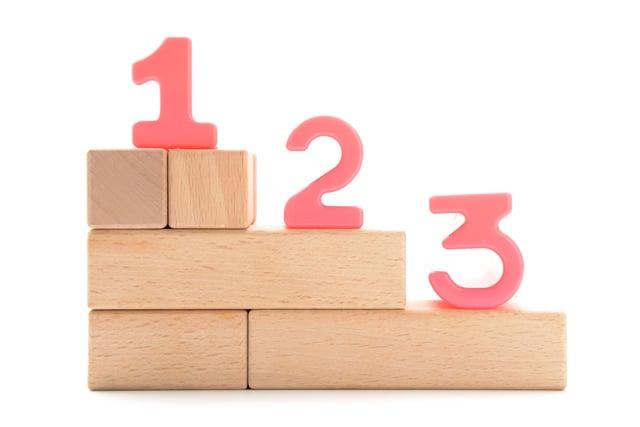 Counting to ten is one of the first common demonstrations that a young child has started their journey into numbers. But frequently, in very early learners, counting becomes a sort of rote, sing-song practice (much like the ABC’s) that may not yet show deep understanding of just what those numbers mean. As adults, it’s easy to take for granted how much very basic numeracy is automatic for us, and that children come to numbers with no knowledge. Here are a few at-home practices that build upon counting and can greatly enhance a child’s understanding of some key math concepts.
Counting to ten is one of the first common demonstrations that a young child has started their journey into numbers. But frequently, in very early learners, counting becomes a sort of rote, sing-song practice (much like the ABC’s) that may not yet show deep understanding of just what those numbers mean. As adults, it’s easy to take for granted how much very basic numeracy is automatic for us, and that children come to numbers with no knowledge. Here are a few at-home practices that build upon counting and can greatly enhance a child’s understanding of some key math concepts.
- “How many was that?” After a child counts some items, no matter how small the number, ask them to repeat back the total. This is called conservation. It may seem obvious, but retaining a number for future use it is an important skill. And it isn’t as simple as it may seem.
- When counting objects, how does the child organize them? Is every object counted? Are some objects counted more than once? Subtly guide the child to try a more systematic practice – making two piles as they count, for example – but let the discovery be their own.
- Games that require two dice offer a great way to practice early addition. When the two dice are rolled, encourage the child to “start with the bigger number” (the die with more dots). And from there, “count on” to get the total. In time, the child will come to learn the number of dots on a die face by sight, a skill called “subitizing,” and it will then be easier and quicker to count on directly from there.
- “Do we have enough?” If the child is helping with a task like setting the table, have them determine how many people there will be. Then give them something to set out, which may or may not be the correct amount, and ask “do we have enough?” This prompts learners not only to count, but also to compare numbers and develop an understanding that one item matches with one (and only one) of something else.
- When a child has counted two groups of separate objects, and it can be anything, ask which is the “bigger number” or “more.” This requires the child to consider just what a numbered amount means, and how it relates to another. Start with small numbers, less than ten.
- “Counters in a cup” Take a number of small objects, say, pennies, and have the child count them. Start with a small number, no more than six if the game is new. Ask the child to cover their eyes while you hide some of the items under a cup. The goal is for the child to determine how many objects are under the cup based on what they can see outside the cup and what they know the total to be. This encourages, among other things, a beginning understanding of how two numbers can nest inside a bigger number.
None of these ideas requires much time, preparation or supplies. They are low-stress and can be a subtle and fun way to build upon important number concepts that can serve a child going forward!
By Kevin Wood, Private Tutor